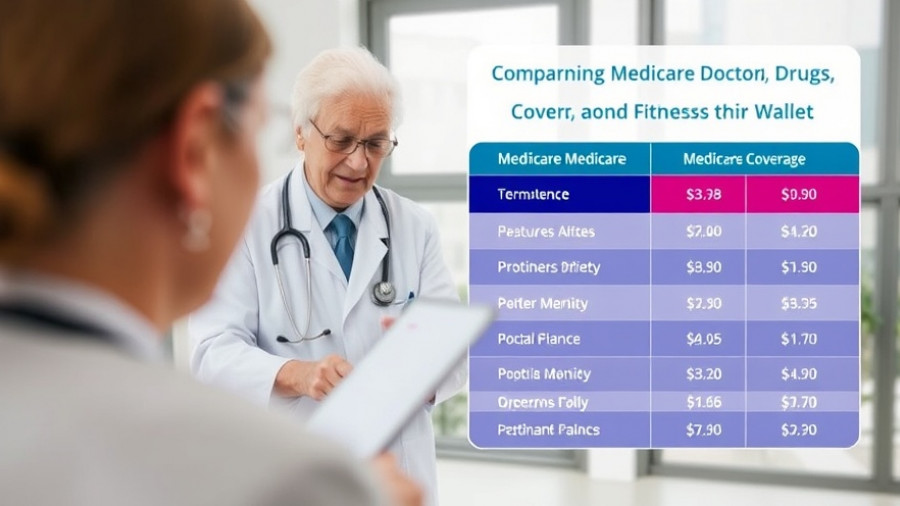
Understanding the Impact of AEP 2026 on Your Health and Finances
The Annual Enrollment Period (AEP) for Medicare, occurring from October 15 to December 7 each year, is a crucial time for beneficiaries to reassess their health care needs. With significant changes looming for 2026, such as increased premiums and the possibility of reduced benefits, this year's AEP could dramatically influence both your health and your finances.
In-Network Providers: The Key to Affordable Care
Your primary care provider is more than just a gatekeeper for referrals and prescriptions. Maintaining a relationship with an in-network doctor can be financially advantageous. If your doctor decides to leave your network, you may face higher out-of-pocket costs or the inconvenient need to find a new provider. It’s essential to evaluate your current provider’s network status during AEP to minimize unexpected expenses. When you seek preventive care from in-network doctors, you not only safeguard your health but also avoid potential financial strain from untreated issues.
Prescription Drug Coverage: Avoiding Costly Surprises
Changes in the formulary of prescription drugs are one of the most pertinent aspects of the AEP. The cost of medications can escalate rapidly, particularly if you’re on a fixed income. Each Medicare Advantage plan typically comes with its own list of covered prescriptions, known as a formulary, which may shift from year to year. For instance, what was a covered medication last year might now belong to a higher-cost tier, leading to sticker shock at the pharmacy counter. Carefully reviewing your drug coverage during this enrollment period is imperative to prevent financial surprises in 2026.
Fitness Benefits: Investment in Your Health Equals Savings
Not every health investment needs to happen within a doctor's office. Fitness-related benefits, such as those provided by programs like SilverSneakers®, offer access to gyms and group fitness classes specifically designed for older adults. Engaging in regular physical activity can help manage chronic diseases and lower the risk of hospitalization, which not only contributes to better health outcomes but can also save money in the long run.
The Bigger Picture: Projected Medicare Cost Increases
Costs are projected to rise across various Medicare components in 2026. According to recent analyses, the standard Part B premium will see an increase from approximately $185 to $206.50 per month, which could take a significant bite out of monthly budgets for many seniors. Furthermore, the annual deductible for Part B coverage is set to rise by about 12%, adding even more financial pressure.
Medicare's prescription drug plan also won’t be spared from these increases, with maximum out-of-pocket expenses hovering around $2,100. As premiums rise, beneficiaries should remain proactive in selecting plans that best suit their changing medical and financial circumstances.
Action Steps for AEP 2026: Empower Yourself
Given the forecasted increases in Medicare costs, it's vital to take the time to re-evaluate your coverage and make informed decisions during the AEP. Here are steps to consider:
- Review your current Medicare plan to ascertain what changes will occur in 2026.
- Compare multiple plans' costs and benefits side by side to identify the best option for your specific health situation and expenses.
- Stay informed about any changes in your network's provider status to avoid unexpected costs.
- Evaluate the fitness benefits available to you; preventive health measures can significantly reduce future healthcare costs.
Taking these steps can make a significant difference in not only your personal finances but also your health and overall wellbeing as you navigate the complexities of Medicare.
In conclusion, the upcoming AEP isn't just a routine renewal; it is a pivotal opportunity to align your Medicare coverage with your health care needs and financial situation. Your informed choices during this period can lead to considerable savings and better health outcomes in the years to come.
 Add Row
Add Row 

 Add
Add 


Write A Comment